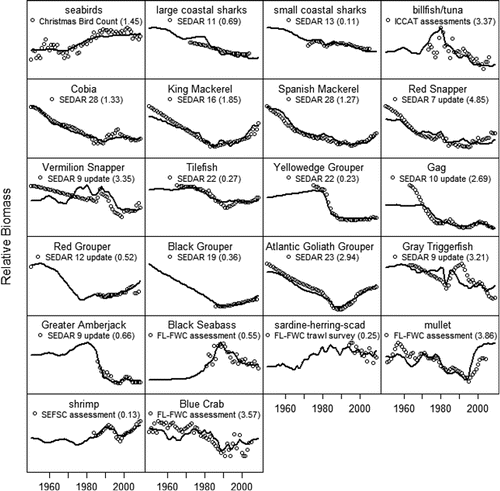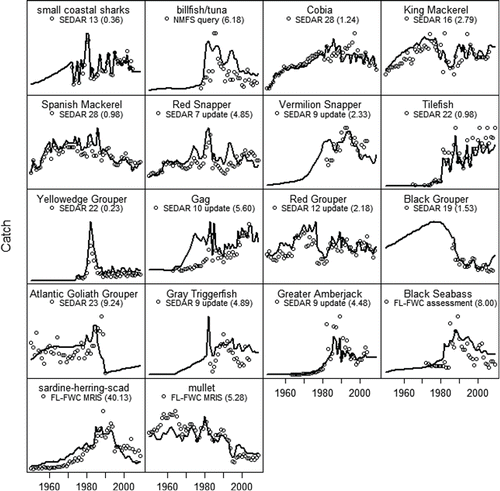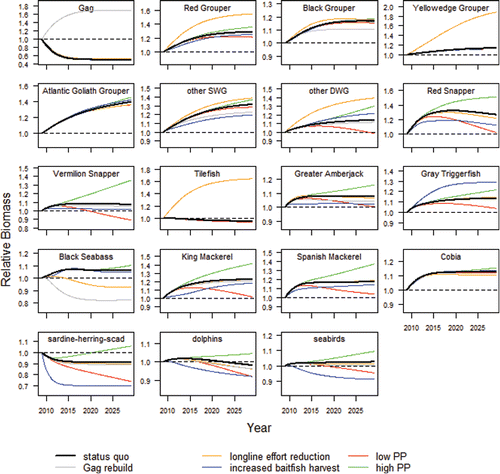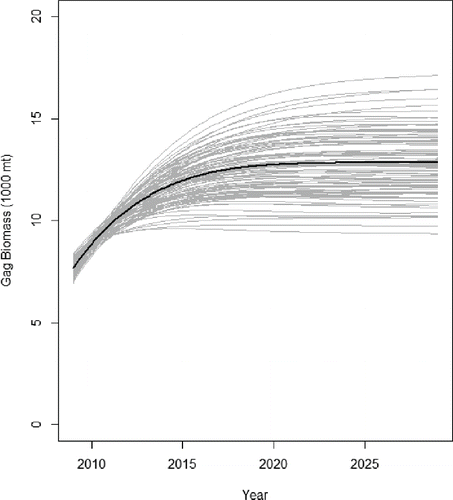Figures & data
TABLE 1. Biomass, catch (including dead discards), instantaneous total mortality (Z), and instantaneous fishing mortality (F) representing historical (1950) and present-day Citation(2009) Ecopath models. Biomass and catch are in thousands of metric tons; Z and F are per year.
FIGURE 1. Predicted biomass (solid lines) from the Ecosim model and observed trends in biomass (circles) for selected species, with the associated sums of squares in parentheses. Observed trends in abundance were obtained from stock assessments by the Southeast Data Assessment and Review, the Florida Fish and Wildlife Conservation Commission, NOAA's Southeast Fisheries Science Center, and the International Commission for the Conservation of Atlantic Tunas.

FIGURE 2. Predicted (solid lines) and observed catch (circles) for selected species from 1950 to 2009, with the associated sums of squares in parentheses. For visualization purposes, the scales of the y-axes are not shown. Observed catch was taken from stock assessments by the Southeast Data Assessment and Review and the Florida Fish and Wildlife Conservation Commission (FL-FWC) or obtained from trip tickets in the FL-FWC Marine Resources Information System.

FIGURE 3. Future biomass trajectories simulated by the Ecosim model. Scenarios that caused an increase or decrease in biomass from the status quo are indicated by lines above or below the solid black lines. In some cases there was little change, and those scenarios may be obscured by the status quo line. The dotted line represents the Ecopath base 2009 biomass level.

TABLE 2. Impact of three policy options and two primary productivity scenarios on select taxa. The 2009 Ecopath baseline biomass and the predicted biomass in 2029 under the status quo are expressed in thousands of metric tons; the other values are percent changes from the 2029 status quo biomass. The values in parentheses are the 95% confidence limits estimated from 100 Monte Carlo simulations.
FIGURE 4. Gag projections under Frebuild = 0.16, where the solid black line represents the base run and the gray lines the Monte Carlo simulation trials in which the biomasses of all species were randomly chosen from uniform distributions.

